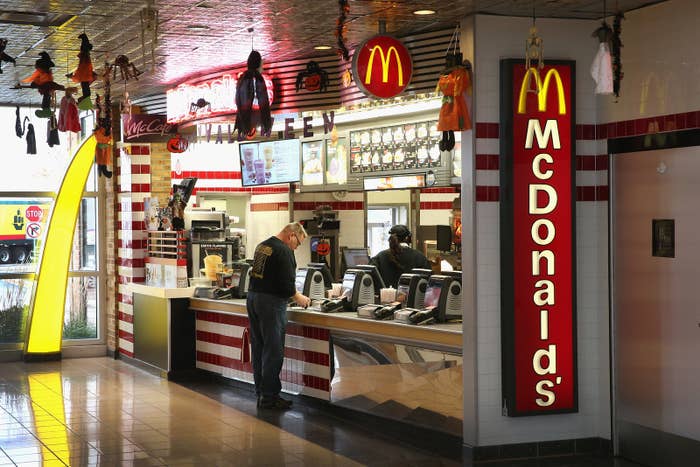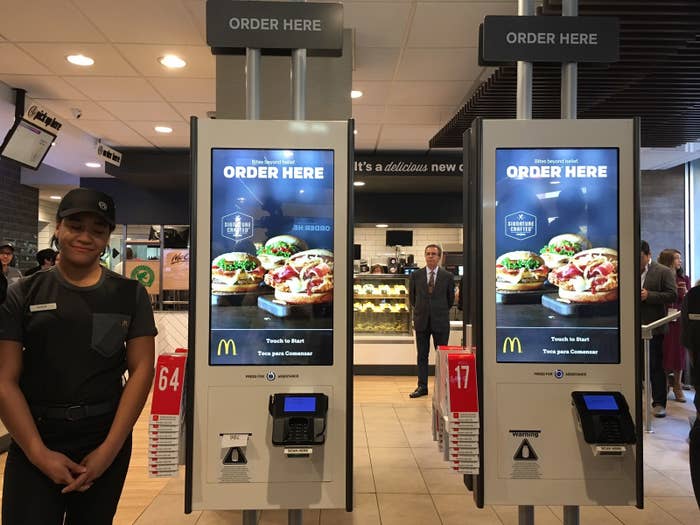
The next step in McDonald's ongoing evolution — which already all-day breakfast, some upgraded ingredients, and new restaurant designs — is table service.
For those wanting to dine in, servers will now bring the burger to the customer at their table. It's major departure from the bare-bones services that customers associate with fast food — a style shaped in large part by McDonald's itself.
McDonald's executives announced the new table service option on Thursday, describing it as another step in efforts to reshape the chain into a "modern, progressive burger company." The company is trying to sustain a domestic sales turnaround which has seen growth return after years of decline.
In the new system, customers order via touchscreen kiosk or with a cashier, then take a Bluetooth-enabled, numbered locator to their table. The locator allows servers to detect what general section of the restaurant they are in, spot the table, and deliver the food.

The company did not say when table service would be available in all 14,000 US restaurants. About 500 US stores already offer table service and kiosk ordering, which is coming soon to restaurants in Boston, Washington DC, Chicago, Seattle, and San Francisco — markets that CEO Steve Easterbrook called "opinion-shaping" and "trendsetting."
The shift to ordering via touchscreen kiosks has raised many questions about the future of the low-paid jobs that McDonald's offers in abundance, with some believing the chain will reduce its labor needs through automation as labor costs rise.
In an interview with BuzzFeed News, Easterbrook said the new table service model will not affect restaurants' headcount or labor costs, as the addition of self-service ordering will shift workers who were behind the counter into new roles delivering orders. He does hope, however, that this additional service will grow sales without increasing labor costs.
In the first half of 2017, McDonald's will also have a limited launch of a mobile order and pay app in several markets, which it plans to make available nationwide by the end of next year.
Easterbrook said the dine-in experience at McDonald's hasn't evolved as quickly as it needed to. The new table service program is about giving customers more options, he said, pointing to the program's success in European markets where it has already launched.
But in America, table service can only play a small part in how the burger chain is experienced by its customers: about 70% of US sales come from the drive-thru. Of the remaining 30% that do walk in, a significant portion takes their food to go.
Franchise owners, who are responsible for the day-to day management of most McDonald's restaurants, will need to invest in the new touchscreen ordering kiosks. The size of such investments will vary based on the size of store: the cost for eight screens is about $56,000, according to a spokesperson.
